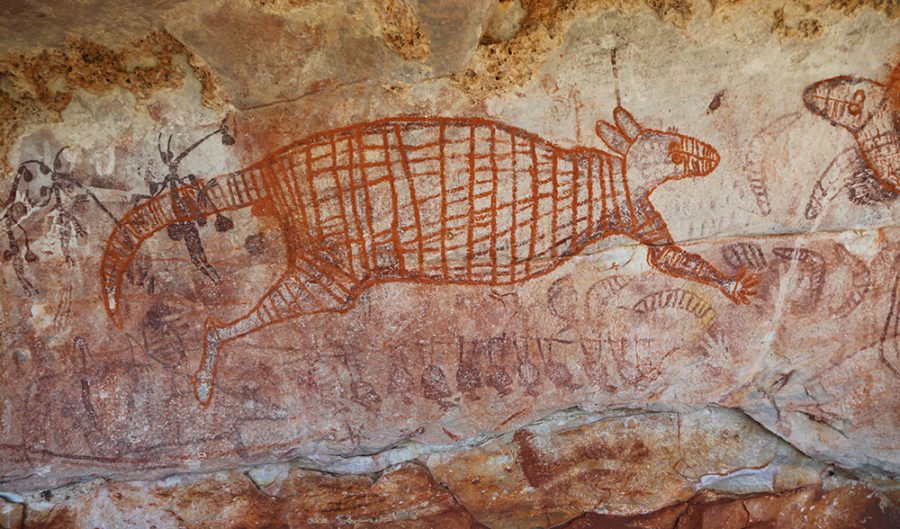Rock art reveals secrets of Australia’s first settlers

AUSTRALIA’S BIGGEST EVER rock art dating study could help determine when Aboriginal people first arrived in the country.
Rock art dating has long been used as a means of tracking early human movement across the globe, and rock art collections in the northern Kimberley region of WA are among the most prolific in the world.
Some of the Kimberley’s art is believed to be tens of thousands of years old, but this is the first time a multi-disciplinary team of scientists has set out to comprehensively study and date it.
Kimberley rock art among oldest in the world
More than a dozen researchers have come together for the Dating Project, analysing rock art samples collected over the past 15 months and earlier.
“I’m not aware of any team like this,” says project member Peter Veth, a professor of archaeology at the University of Western Australia.
The world’s oldest rock art, discovered in Spain, France and, most recently, Indonesia, is 36-41 thousand years old. It’s believed Aboriginal people arrived in Australia at least 50 thousand years ago, and researchers are hoping their rock art dating will help test that estimation.
“Theoretically, people started producing art as soon as they landed – that’s part of what people do to their landscapes – and whether we find [that art] next year or in 20 years is unknown. But there should be art back to 50 thousand years go,” says Peter.
Rock art styles and techniques
As with all art, rock art techniques and styles change over time. Dating particular styles, and then looking at the geographical spread of them, can help scientists understand how the first humans in Australia moved across the landscape.
“In the past, [some of the styles] appear similar so we assume there is a common origin. And that starts to give you a good sense of how cultures and regional identities actually developed through time,” says Peter.
Scientists involved in the Dating Project have been analysing many different styles of art, including engravings, naturalistic portrayals of animals, finely painted Gwion figures (previously called ‘Bradshaws’), and depictions of Wanjina, the spirit ancestors.
“What appears to be the earliest at the moment are the cupules, these large canvases with multiple engraved domes, or half oranges,” says Peter.
Dating Kimberley rock art
Nine different dating techniques are being used to determine when the Kimberley rock art was created, and the results will be cross-checked against each other for accuracy.
Many of the techniques involve analysing material around the art, such as tiny mineral crusts or mud wasp nests, to define a period of minimum and maximum creation time.
“What’s really different about this project is they’re trying to use every technique that’s known, and also trying to invent new ones,” says Paul Taçon, chair of rock art research at Griffith University.

